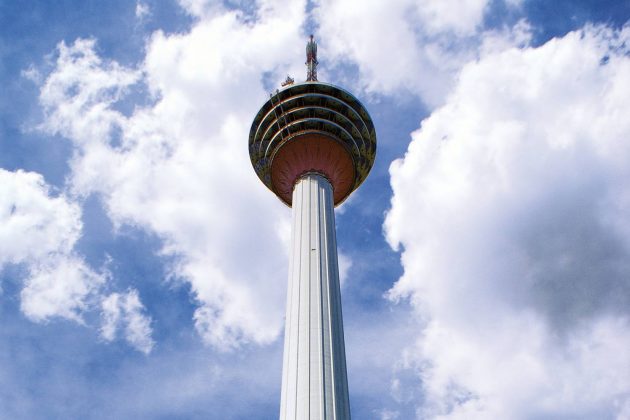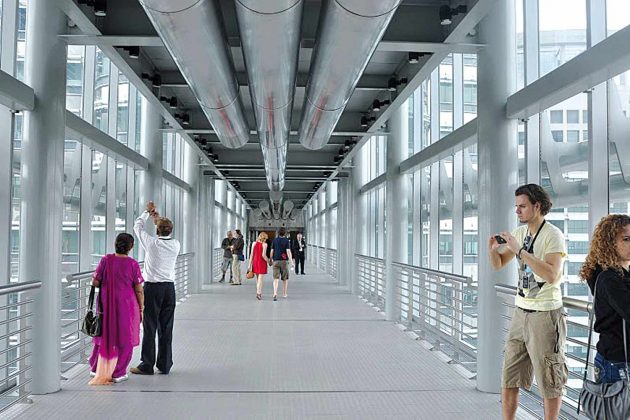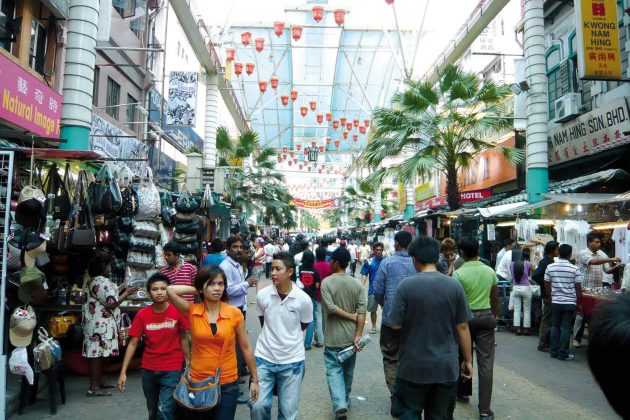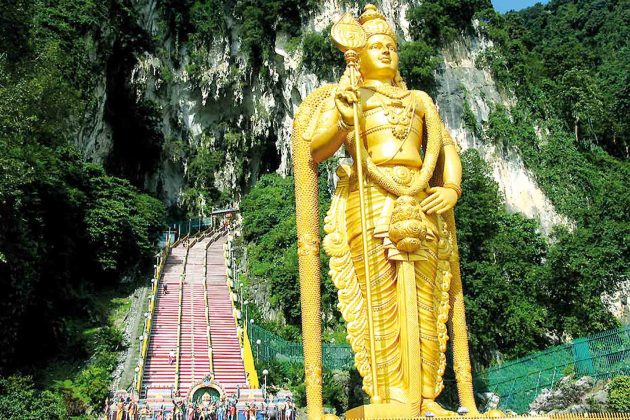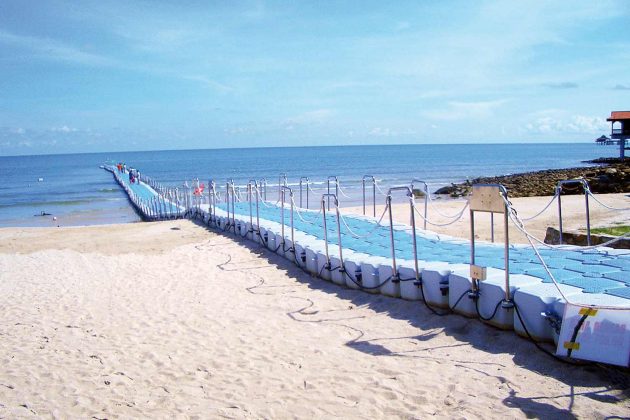My wanderlust has taken me to more than 10 wonderful countries around the globe, the latest one being the sprawling nation of Malaysia. Malaysia has large cities, rain forests, extensive heights and the world’s most beautiful white sandy tropical beaches that attract tourists from all over the world, around the year.
At first, I was a bit sceptical about visiting Malaysia. But as it turned out, the Malaysia trip was the most mind-blowing of my experiences; it has left an indelible impression on my mind. Traditionally a Muslim nation, Malaysia is a multi-cultural, multi-lingual and, a multi-ethnic society with Malays, Chinese, Indians and people from other ethnic groups, living together peacefully. Malaysians are known for their religious tolerance. Traditional temples and churches exist side-by-side with the mosque. And festivals like Hari Raya, Chinese New Year, Diwali, and Christmas are celebrated together. Unity in diversity of races, religions and culture has made this country unique, stable and peaceful.
Kuala Lumpur [KL], the capital of Malaysia, was a pleasant drive from Singapore with my family. We stepped on the Malaysian soil at Johar Baru, the road entry point, which is 40km from Singapore. Immigration and customs cleared, we soon found ourselves moving at a delightful speed under the watchful eye of speed monitoring cameras installed on the electric poles on the sides of the four-lane expressway.
For miles together, the road is flanked by palm tree plantations presenting a panoramic view. The stretch of about 300km from Singapore to Kuala Lumpur has number of resting spots on the way, each equipped with a restaurant; a petrol pump; an Islamic prayer room and other conveniences. You can enjoy a large mug of Teh tarik [tea] or coffee to refresh you from the discomforts of a road journey. It took us about four hours to cover the journey, whereas the bus would take about six.
Kuala Lumpur, ‘the garden city of lights’, is not just the capital city but also one of the three federal territories of Malaysia. It has grown from a tin mining camp in 1857 into a bustling metropolis of South East Asia today. As we approached the city, we noticed the glistening skyscrapers and amidst them the beautifully-laid gardens with a delightful variety of flowers. But more than that, what struck us most were the soft-spoken people and the warm welcome—they invoked an instant feeling of belongingness.
Since it was late in the evening by the time we reached, we decided to settle down in our hotel and explore KL the next day. KL has all types of hotels to cater to all categories of tourists. Incidentally, we had booked in advance at a luxury hotel located in central KL, as we got a good deal. Refreshed from a comfortable night, we set out to explore the beautiful city of Kuala Lumpur.
Petronas Twin Towers were one of the most interesting places we visited. The towers are a landmark of KL and represent the ambition and aspirations of the Malaysian people. As we ambled towards the white jewel, the Petronas Twin Towers, visible from miles, sparkled like a diamond. The structure appeared in no way less glistening than the Eifel Tower in Paris by the night. During day, the towers sparkle equally in the Sun. We took a lift to the sky bridge to have a view of the city and were mesmerised. We got some pictures of the magnificent wonder taken from the base.
The floor plan of the towers is based on simple Islamic squares creating a shape of eight pointed stars. The towers are 452m high and its structure has a sturdy frame made of pewter [tin-based alloy].
Below the tower are located the popular Surya shopping mall, and Dewan Filharmonik Petronas—the home of the famous philharmonic orchestra. Here, you can find all sorts of shops selling branded items, and food outlets.
In the basement of the towers, you have the KL Sentral Station and check-in facilities for international flights; take the metro, if you like, from here to the departure terminal of the international airport located about 60km away. It takes 30 minutes to reach there by train while the taxi easily takes over an hour.
Food in Malaysia is a fusion of Malay, Chinese, Japanese and western cuisine as a result of the influence of diverse ethnic groups living together. But vegetarian Indian food is not easy to find. You can try the Sarvanaa Bhawan, though, which serves south Indian vegetarian dishes. It is popular with the Indian Diaspora. The other place worth exploring for dining is a spick clean street known as Jalan Petaling in the China town, where you can have Chinese food at any of the many kiosks. McDonalds, and KFC are the other options.
When you are here, don’t forget to experience Kopi culture, the age old Malaysian tradition of drinking a cup of hot coffee with toasted bread, butter and Kaya [coconut jam] applied over it.
Not very far from the Petronas Towers is The Menara Kuala Lumpur or the KL tower [about 421m tall], which is the fifth highest telecommunications tower in the world. Its spindle-like apex is visible from almost anywhere in KL. We took a lift to the viewing deck at 276m, which is at least 100m higher than the sky bridge of the Petronas twin towers. The view of the city through the telescopes installed at the deck and listening to the recorded details of the important city spots through the headphones was quite an experience.
In my experience, if you have women accompanying you, it is impossible to escape shopping. So I succumbed, even though it was not on our agenda. To our good luck, we found that KL offered a tantalising variety of leather goods, apparel and other merchandise at attractive prices. There are many shops selling branded and unbranded wares, and if you are a prudent shopper, you may explore the China market. KL is a heaven for shopaholics.
Having learnt about pewter used in the Petronas, we headed to visit the Royal Selangor Pewter Factory, located about 8km north east of the city centre. Malaysia is the largest pewter manufacturer of the world. The metal is used for making small key chains, jewellery, and souvenirs or even gigantic towers. We picked up a mini replica of KL towers from the factory showroom as a souvenir.
Malaysia is home to some intriguing handicrafts. The batik, the cane baskets, the wooden lamps, jute and leather bags are some items that visitors like to carry back home from the art and culture centres spread across KL, Langkawi Island and other places in Malaysia.
You find thousands of Hindu temples spread across the country; The Tamil immigrants who migrated here during the 18th and 19th centuries have nurtured their religious traditions. We decided to visit a century-old temple dedicated to Lord Kartikeya carved out in limestone at the Batu caves located about 20km from the city centre. The temple is lodged in a cave about 400ft above the ground level and we had to climb about 270 steps to reach it. The climb was a spiritual experience and reminded us of our visit to the famous Vaishno Devi temple in Jammu & Kashmir. To view the beautiful sunset from the cliff was another memorable experience.
Back to Batu caves, at the ground level, stands a gold-painted statue of Lord Kartikeya [also known as Murugan by Tamilians] that is 140ft high. The imposing statue makes you bow your head in obeisance to the Lord to seek His blessings. There are three caves at the base of the hill with mural depictions of scenes from the Ramayana and Mahabharata.
After exploring the caves, we enjoyed refreshing coconut water and a south Indian meal available at the restaurant in the complex before returning to our hotel in KL.
The next day, we drove to Cameron Highlands, about 350km from KL. The scenic mountain views on the way were simply breathtaking. We opted to visit Cameron instead of Genting Highlands because we had no interest in casinos for which Genting is known. Cameron Highlands is the largest hill resort in Malaysia located at about 6000ft above sea level. The maximum temperatures here never exceed 20 degrees Celsius. And the minimum rarely falls below 10 degrees Celsius.
Cameron is known as the ‘Green Bowl’ of Malaysia as it supplies produce of vegetables, tea, strawberry and honey to major cities. We picked up special tea from a tea factory located here. The area abounds in colourful flora and has rose gardens. Of course, you cannot miss visiting Butterfly farm and Cactus valley [it has a large variety of cactus plants]. Other attractions are waterfalls and jungle walks that will stay with you for long.
The coastline of Malaysia stretches to both ends of the South China Sea. It has tranquil white beaches and is also endowed with spectacular islands off its coast line, Langkawi being one of the most popular ones. It’s not just shopping and site seeing, you can even try skiing, snorkelling and scuba diving in Malaysia. As my holidays were coming to an end, I was compelled to postpone exploring the islands and the beaches to my next visit. But you need not.
This was first published in the January 2011 issue of Complete Wellbeing.



